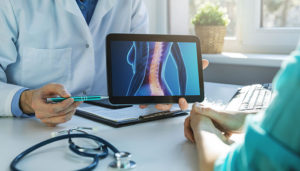Back pain may range from mild to severe and disabling ache. It may restrict your movements and prevent you from executing your day-to-day activities, negatively affecting the quality of your life. While neck pain is a common ailment that may be caused by various health conditions. It occurs around your neck—particularly where the cervical vertebrae are located.
It’s best to seek immediate medical attention when it happens or gets worse due to injuries, such as accidents, slips, or falls. You should consult a healthcare facility such as Dickinson Neurological Surgery if a simple neck and back pain becomes a complex disorder.
In this article, you’ll discover how medical professionals diagnose neck and back pain, so continue reading to learn more.
How To Diagnose Neck Pain?
Diagnosing neck pain can be performed in several ways—from a simple review of your medical history to advanced imaging technology.
-
Evaluating Medical History
A thorough evaluation of medical history is the first stage of diagnosing the cause of neck pain and any other health conditions. Questions relevant to what you’re experiencing and feeling right will be asked. These include
-
Questions Related to Symptoms
When did the neck pain start to come out? Does it come and go? Is it radiating across your arms, fingers, and shoulders? Does it stay in one location? Are you experiencing other symptoms apart from your neck pain?
-
Questions Related to Your Occupation
What kind of work are you performing day-to-day? Is it strenuous physical labor or simply sitting in front of your desktop? Do you commute to get to work? How does it feel?
-
Questions Related to Your Lifestyle
What kind of person are you, active or sedentary? If you’re active, what hobbies do you usually do? Are you fond of gardening or swimming? And if you’re living an inactive lifestyle, what is your day like? Do you spend the entire day sitting on a couch, watching TV, or lying on a bed?
Furthermore, other topics aside from all that’s mentioned above may be discussed. As more details are gathered, your doctor will be able to narrow down all the possible diagnoses and determine the following treatments.
-
Undergoing Physical Examination
A thorough physical examination is the next stage of diagnosing your neck pain. You’ll undergo a series of physical activities to determine how the condition affects your mobility and support and prove the previous findings. This includes:
- Observation: Your doctor will check your posture—particularly around your shoulders and neck—and examine your neck for possible abnormalities and lesions.
- Palpations: Your doctor will check the soft tissues around your neck for potential muscle tenderness, tightness, and spasms.
- Muscle Power: Your doctor will test your muscles around the shoulders, hands, and arms to determine any possible signs of weakness.
- Sensation: Your doctor will check your condition for unusual sensations. These include the tingling that radiates into your fingers, arms, and shoulders.
- Range Of Motion: In this stage, your doctor will ask you to move and rotate your neck around—up and down and from side to side. Then, that will be compared to what’s considered normal. Even if your neck achieves a full range of motion, your doctor will note if it’s done with ease or if some movements cause struggles.
- Reflex Testing: Your doctor will use a rubber hammer to check the reflexes around your forearms, triceps, and biceps. This is to determine if the nerves around the neck deliver signals and messages to the brain as intended.
Neck pain can be diagnosed only with a thorough review of medical history and physical examination. However, some cases may require more information for a more accurate diagnosis.
-
Using Advanced Imaging Technologies
Advanced imaging technologies help medical specialists to have a better and clearer view of the possible causes of your neck pain. This is required if the findings from the previous evaluation are quite vague.
Here are the different imaging technologies you might be required to undergo:
- X-Ray: This imaging test provides a good picture of the bones in your neck using electromagnetic radiation. It can be used to determine potential tumors, spinal degradation, and fractures in the vertebral column.
- CT Scan: A computer system that produces cross-section images, which offer a detailed view of bones. This imaging technology is extremely powerful in identifying even the smallest changes in the bone structure.
- MRI Scan: A more advanced imaging technology compared to the two mentioned above. It uses a strong magnet and radio waves to produce a much better picture of your body’s cross-sections, particularly inner bones and soft tissues.
Apart from these technologies, other imaging options, such as ultrasound and bone scan, may be required, depending on the circumstances.

How To Diagnose Back Pain?
Diagnosing back pain is quite similar to how you would diagnose neck pain. Of course, the process will be a bit different compared to neck pain diagnoses. That said, here’s how back pain is diagnosed:
-
Evaluating Medical History
As mentioned earlier, this is the prior stage to physical examination. Here are some of the questions you might need to answer:
-
Questions About Your Symptoms
Does the pain get worse at specific times of the day—for example, waking up and going home from work? Does it spread across your entire back or to other body parts? Are you experiencing other symptoms or sensations at the same time, such as numbness and tingling? How would you describe the pain—is it sharp, stinging, hot, or mild?
-
Questions About Your Activity Level
Are you living an active or sedimentary lifestyle? How often do you exercise? Do you spend most of your time sitting in front of your computer? Do you usually stand in line for longer periods?
-
Questions About How You Sleep
How long is your average sleep? Do you get at least seven hours of sleep every day? How do you sleep in terms of position? Do you have any preferred way of sleeping? What kind of pillows and mattresses are you using? Are they made of high-quality materials good for your back?
-
Questions About Your Posture
What kind of posture makes you feel comfortable and uncomfortable? How do you sit? Upright or in a slouching position? How do you stand up and walk? Is it in a straight (chest out) or slouching manner?
-
Questions About Your Injuries
Have you had recent injuries, such as car accidents, slips, and falls? Have you had past injuries that are becoming more relevant now? If so, these injuries are probably why your back is experiencing excruciating pain.
Your answers to these questions will give your doctor a better view of your daily life, showing a myriad of possibilities concerning your back pain. So, make sure to answer all questions truthfully—no secrets.
-
Undergoing Physical Examination
After reviewing your medical history, it’s time to proceed to a physical examination. The physical examination to diagnose your back pain may include:
- Palpation: Your doctor will check your back for spasms, tenderness, tightness, and potential joint abnormalities.
- Leg Raise Test: You’ll be asked to raise one leg as high and straight as you can. If this results in lower back pain, you might have a slipped, bulged, or ruptured disc.
- Reflex Testing: The reflexes around your legs will be checked to assess muscle strength. If you have no reflexes, your nerves are probably not responding as they should.
- Motion Test: Your doctor will ask you to twist or bend your back in specific positions. This test aims to look for ways to ease or worsen pain to determine the limits to your mobility.
In most cases, a combination of physical examination and medical history is enough to diagnose the cause of your back pain. However, some situations require advanced techniques to understand the condition better.
-
Using Advanced Imaging Technologies
As previously discussed, imaging technologies are used to produce a better picture of the condition. Also, it’s used to prove and clarify unclear findings from physical exams and medical history. That said, here are common imaging technologies that may help diagnose your back pain accurately:
- X-Rays: This is used to take a closer look at the bones along your spine. It shows abnormalities in the spinal column like tumors, fractures, arthritis, and bone spurs.
- CT Scan: This provides a cross-sectional image of your spine, allowing your doctor to inspect your spine at different angles. Sometimes, a myelogram is combined with a CT scan for a better picture.
- MRI Scan: This provides an even better and clearer image of the cross-sections of your spine without radiation and myelogram. In short, it’s safer compared to the other two discussed above.
Final Words
Neck and back pain can range from mild to severe and persistent, which may limit your movements. Consult a neck and back pain specialist to diagnose your condition and have yourself treated accordingly.
Furthermore, always be honest with your doctor and answer their questions appropriately. This will help them better understand your condition and create a more accurate diagnosis to treat it properly.


















